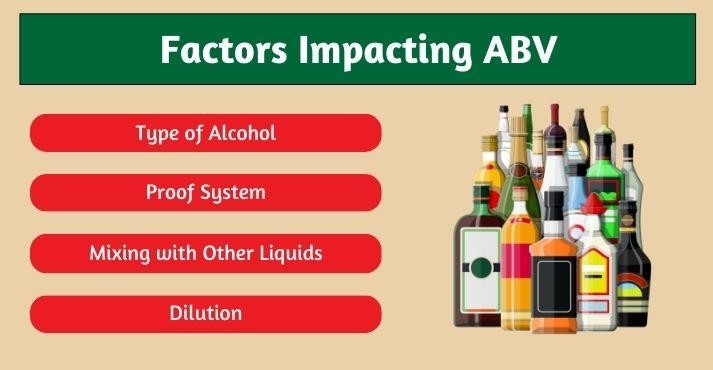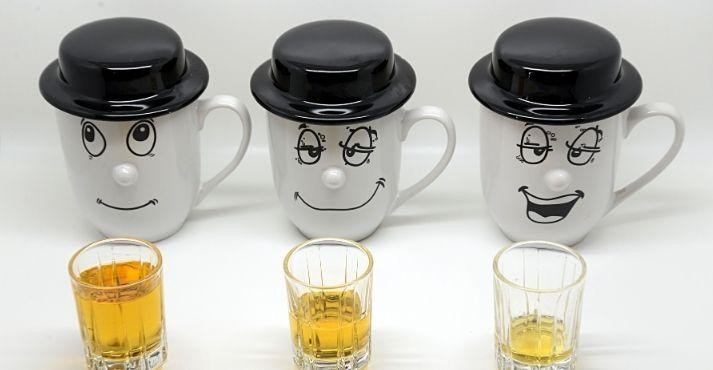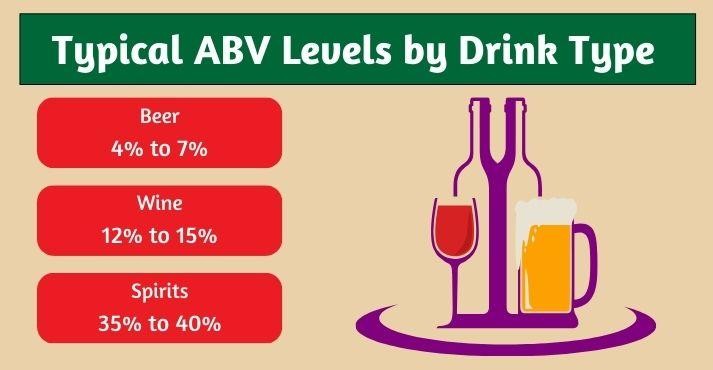Have you ever wondered how strong your favorite cocktail is? ABV, or Alcohol by Volume, is the measurement used to determine how much alcohol a beverage contains, influencing both the drink’s strength and effects.
ABV percentage is critical to understanding a drink’s potency, from casual beers to intense spirits. ABV is essential not just for picking drinks that match personal taste preferences but also for drinking responsibly.
In the wine market, beer industry, and broader alcohol sector, ABV measurements help consumers make informed decisions, monitor their alcohol intake, and enjoy their favorite beverages responsibly.
This glossary article explores ABV and its meaning and explains how it works in different types of alcohol, providing a comprehensive guide to this vital term in the alcohol industry.
What Does ABV Mean?
ABV, or Alcohol by Volume, is a common wine term indicating a beverage’s alcohol content as a percentage of its total volume. This measurement is essential for consumers, as it provides a quick way to assess a drink’s strength and potential effects.
The ABV percentage represents the amount of pure alcohol in 100 ml of the beverage. For example, if a beer has an ABV of 5%, 5 ml of every 100 ml is pure alcohol.
ABV percentages are clearly stated on the labels of most alcoholic beverages, including beer, wine, and spirits, allowing consumers to make informed choices. For example, beers generally have a lower ABV than spirits, making them easier to consume in larger quantities.
In contrast, high-ABV drinks like vodka or whiskey require smaller servings due to their intense alcohol content.
Understanding how ABV works can also help consumers make sense of labeling terms like “proof” and recognize how different ABV levels affect taste, potency, and experience.
The concept of proof in alcohol is related but different. The proof is measured by doubling the ABV, which originated in the 18th century, to verify spirit strength.
How is ABV Calculated?
ABV is calculated by measuring the volume of pure alcohol in a drink and dividing it by the total volume of the beverage. This ratio is then multiplied by 100 to obtain a percentage.
The formula for calculating ABV is as follows:
ABV= (Volume of Pure Alcohol/Total Volume of Beverage)×100
For instance, if a wine bottle contains 30 ml of pure alcohol in an 850 ml bottle, the ABV calculation would be:
ABV= (30/850)×100=3.53
While this formula provides a basic understanding, calculating ABV can be complex in actual distillery settings, requiring specific tools and precise temperature control.
Factors Affecting ABV

Several factors influence the ABV of a drink, from the type of alcohol to mixing and dilution practices. Here’s a closer look at how these variables impact ABV:
1. Type of Alcohol
Different drinks come with varying ABV percentages based on how they’re produced. Here’s a breakdown:
- Beer: Most beers range from 4% to 7% ABV, though some craft beers reach up to 12% ABV. Beer’s alcohol content results from a unique brewing process, where grains are fermented by yeast to convert sugars into alcohol. Higher ABV beers, often called “strong ales” and draft beers, are known for their intense flavors and increased potency.
- Wine: Wines generally have ABVs between 12% and 15%, although fortified wines like sherry or port may reach up to 20% ABV. The alcohol percentage in wine varies by grape variety, climate, and fermentation duration. In the wine industry, different types of wine are crafted with specific ABVs in mind, influencing each bottle’s final taste and strength.
- Spirits: Spirits like vodka, gin, and whiskey generally have higher ABVs, often between 35% and 50%. Certain spirits, such as absinthe, can reach up to 80% ABV, making them significantly more potent. High-ABV spirits undergo distillation to concentrate the alcohol, producing more potent, flavorful drinks. Are you curious about how spirits are measured?
2. Proof System
The proof system, commonly used in the United States, is another method for indicating alcohol strength. Proof is calculated as twice the ABV, so a 40% ABV spirit would be labeled 80 proofs.
This system originated in the 18th century when alcohol content was tested using gunpowder. If the mixture ignited, it was deemed “proof” of strength.
3. Mixing with Other Liquids
When mixed with other liquids, such as soda or juice, a drink’s ABV decreases, diluting its alcohol content. Cocktails illustrate this effect well; a cocktail’s ABV depends on the proportion of alcohol in mixers like water, soda, or juice.
4. Dilution
Dilution, especially with ice, reduces the ABV of a beverage. Adding ice or water lowers the alcohol concentration, making consumption easier without significantly altering the drink’s flavor profile. Bartenders often use dilution to create balanced cocktails with smooth textures.
Importance of Knowing ABV

Knowing ABV percentages is crucial for making informed decisions about alcohol consumption. Not only does knowing a drink’s ABV help individuals gauge its strength, but it also promotes responsible drinking habits and safety. Here are several reasons why knowing ABV is essential:
1. Moderation and Responsible Drinking
ABV serves as a guide for individuals looking to practice moderation. Drinks with a high ABV percentage can have intense effects with even small servings. In contrast, low-ABV beverages, such as beer or certain wines, can often be consumed in more significant quantities with less risk of immediate intoxication.
When knowing a drink’s ABV, individuals can pace themselves and make decisions that prevent overconsumption.
For example, while a glass of wine may contain around 12% ABV, a whiskey might have 40% ABV, requiring more careful moderation.
Recognizing these differences encourages responsible drinking and helps prevent the adverse effects of alcohol, such as impaired judgment and increased risk-taking behavior.
2. Understanding Alcohol’s Effects
The effects of alcohol vary significantly depending on its ABV percentage. Higher ABV drinks are more potent, leading to pronounced effects even with smaller quantities.
Understanding ABV levels allows consumers to anticipate how quickly they may feel a drink’s effects and how long those effects might last.
For instance, someone drinking a cocktail with 20% ABV might feel the effects sooner than if they were sipping on a beer with only 5% ABV.
This awareness helps individuals better understand their tolerance levels, avoid unwanted side effects, and enjoy drinks in a way that suits their comfort.
3. Blood Alcohol Content (BAC) and Safety
The ABV of consumed drinks directly influences Blood Alcohol Content (BAC). BAC refers to the amount of alcohol in a person’s bloodstream, and it rises more rapidly when high-ABV drinks are consumed.
Monitoring ABV can help individuals maintain a safer BAC, reducing the likelihood of impaired driving or other risky behaviors.
For example, knowing that a particular beverage has a high ABV may encourage individuals to consume it more slowly, wait longer between drinks, or plan for alternate transportation.
Many countries set legal BAC limits for drivers, making it essential for individuals to understand how ABV influences their BAC. Higher ABV drinks contribute to quicker rises in BAC, even with smaller servings.
For those who want to manage their alcohol intake, choosing lower-ABV drinks can help maintain a safer BAC, especially in social settings where multiple drinks may be consumed over a period of time.
4. Preventing Overconsumption
Awareness of ABV is also helpful in avoiding overconsumption, particularly with stronger beverages like spirits. Drinks with high ABV percentages are more likely to lead to rapid intoxication if consumed quickly, whereas low ABV options allow for a more relaxed experience.
This concept is especially relevant when exploring the healthiest alcoholic drinks, which are often lower in ABV and allow consumers to enjoy complex flavors without heavy intoxication.
5. Managing Caloric Intake
Alcohol has calories, and the number of calories is directly related to the drink’s ABV. Higher ABV drinks contain more calories per serving, adding up quickly.
For health-conscious individuals, choosing drinks with a lower ABV can help manage caloric intake, making it easier to enjoy alcohol in a balanced lifestyle. Lower-ABV options, such as light beers or low-alcohol wines, offer a way to enjoy a drink without significantly impacting daily calorie goals.
6. Customizing Drinking Experience
Knowledge of ABV percentages allows individuals to tailor their drinking experiences to match their preferences. Some people may prefer lower-ABV drinks for casual social gatherings, while higher-ABV drinks may be chosen for special occasions or when sipping slowly.
Knowing ABV enables consumers to adjust their choices based on context and purpose, enhancing the enjoyment of the drink.
For instance, sparkling wines or lighter beers with low ABV are often favored at daytime events or brunches for their mild effects, while a rich, high-ABV whiskey might be enjoyed in a more intimate evening setting.
This flexibility allows consumers to make mindful choices that suit their immediate needs and preferences.
7. Enhancing Taste and Flavor Appreciation
Different ABV percentages affect a drink’s taste and mouthfeel. Higher-ABV drinks often bring bold, intense flavors, whereas lower-ABV drinks may offer more subtle, nuanced profiles. For wine and spirits enthusiasts, understanding ABV allows for a deeper appreciation of these flavors.
For example, high-ABV spirits like whiskey or brandy are often sipped slowly to fully experience the layers of flavor, while low-ABV options like light wines or beers are enjoyed for their refreshing qualities.
8. Alcohol Tolerance and Individual Limits
Everyone has different levels of alcohol tolerance, and factors like age, body weight, and experience play a role in how alcohol affects each person.
Awareness of a drink’s ABV percentage helps individuals understand their limits, allowing them to drink within safe and comfortable boundaries.
For example, someone with a lower tolerance may prefer a 4% ABV beer over a 12% ABV wine. Having this knowledge encourages mindful drinking and reduces the chances of experiencing unpleasant side effects, such as nausea or a hangover, from drinking beyond one’s comfort level.
Common ABV Levels by Beverage Type

Here’s an overview of typical ABV percentages for common alcoholic beverages, helping consumers gauge the strength of their favorite drinks:
Beer
- Typical ABV Range: Most beers range from 4% to 7%.
- Craft Beer: Craft beers often have a higher ABV due to unique brewing techniques and ingredients, enhancing flavor intensity.
Wine
- Average ABV Range: Wines usually have an ABV between 12% and 15%.
- Variations: Red wines often have a slightly higher ABV than white wines due to longer fermentation, while dessert wines like port may reach up to 20%.
Spirits
- Typical ABV for Spirits: Spirits such as vodka, gin, and rum have ABVs between 35% and 50%.
- High-ABV Examples: Spirits like grain alcohol have high ABVs, sometimes up to 95%, making them particularly potent.
High vs. Low ABV
Comprehending high and low ABV percentages helps consumers choose drinks that match their preferences and tolerance.
High ABV
Like most spirits and fortified wines, beverages with an ABV of 15% or more are considered high. Higher ABVs translate to more intense flavors and effects.
Low ABV
Low-ABV drinks, such as beers and certain wines, are easier to consume over time, allowing for a more relaxed experience without significant intoxication.
ABV vs. Proof
Proof is a centuries-old beverage’s ABV percentage measurement system related to ABV. It originated with the beverage’s ABV percentage to verify the strength of alcoholic spirits. In modern terms, the proof is calculated as exactly twice the ABV percentage of a beverage.
For instance, if a whiskey has an ABV of 40%, it would be labeled 80-proof in the United States. This system is most commonly used for spirits and high-strength liquors, such as vodka, rum, and whiskey.
The term “proof” emerged in the 18th century when traders needed a way to test the alcohol strength of spirits they were buying or selling. The traditional test involved mixing a small amount of the spirit with gunpowder and attempting to ignite it.
If the mixture ignited, it was considered “proof” of strength, signifying that the alcohol content was sufficient for trade. If the gunpowder failed to ignite, the spirit would be too diluted. This crude but effective method sets a rough standard for determining high-proof spirits.
Today, the proof system remains a valuable reference for understanding the strength of spirits, especially in the U.S., where proof measurements appear on labels of many alcoholic beverages.
In other regions, however, ABV is the primary measurement system. For example, in the European Union, ABV alone is required on alcohol labels, with proof-primarily phased out.
Importance and Impact
Knowing what is proven in alcohol is valuable when comparing drinks across different markets. For instance, a 100-proof whiskey in the U.S. would have an ABV of 50%, making it exceptionally strong compared to a 40-proof spirit with only 20% ABV.
The higher the proof, the more concentrated the alcohol, impacting taste and potency. Knowing a beverage’s ABV or proof allows consumers to gauge its strength, effects, and ideal serving size, ensuring a balanced and enjoyable drinking experience.
Conclusion
Knowing ABV is critical for anyone who enjoys alcohol, from casual drinkers to enthusiasts. ABV percentages provide insight into a drink’s strength and effects, helping consumers make informed choices.
Distinguishing a drink’s ABV is also essential for responsible consumption. It allows individuals to make choices that align with their tolerance and the occasion.
Higher ABV drinks, like spirits, tend to have intense flavors and effects, while low-ABV options, such as light beers, offer a milder experience suitable for longer gatherings.
ABV awareness also supports mindful choices regarding caloric intake, personal limits, and legal safety, such as avoiding high BAC levels when driving. Ultimately, understanding ABV adds to appreciation and promotes safe, enjoyable drinking experiences.





























